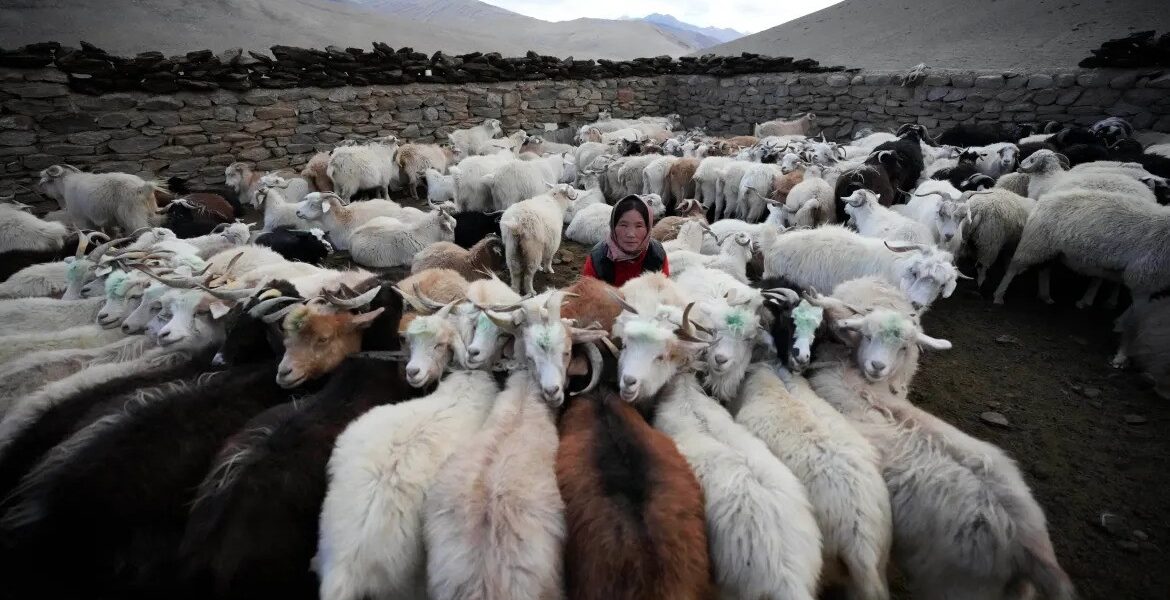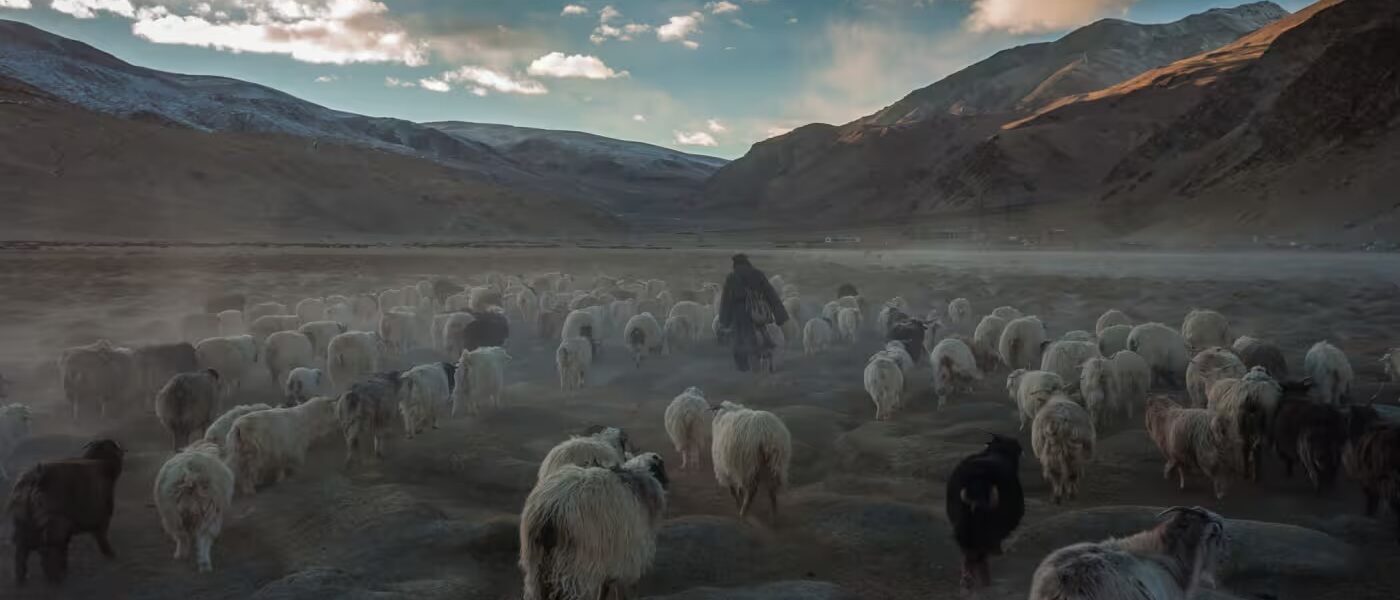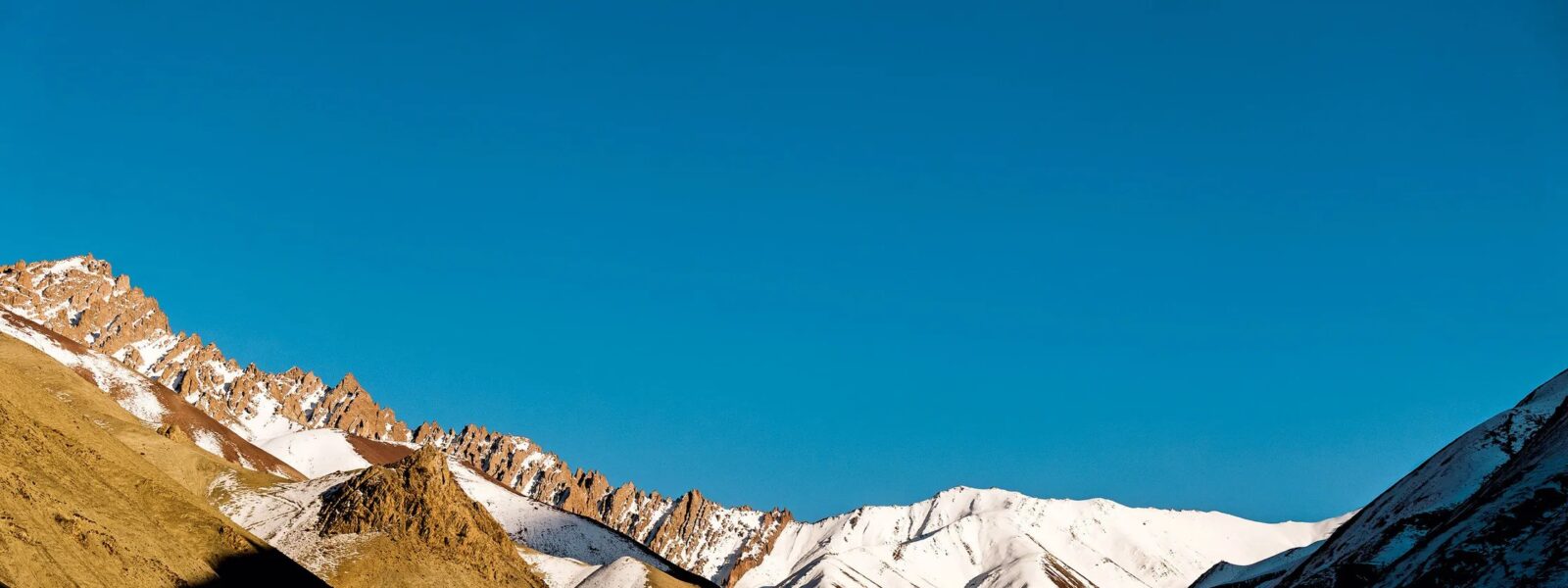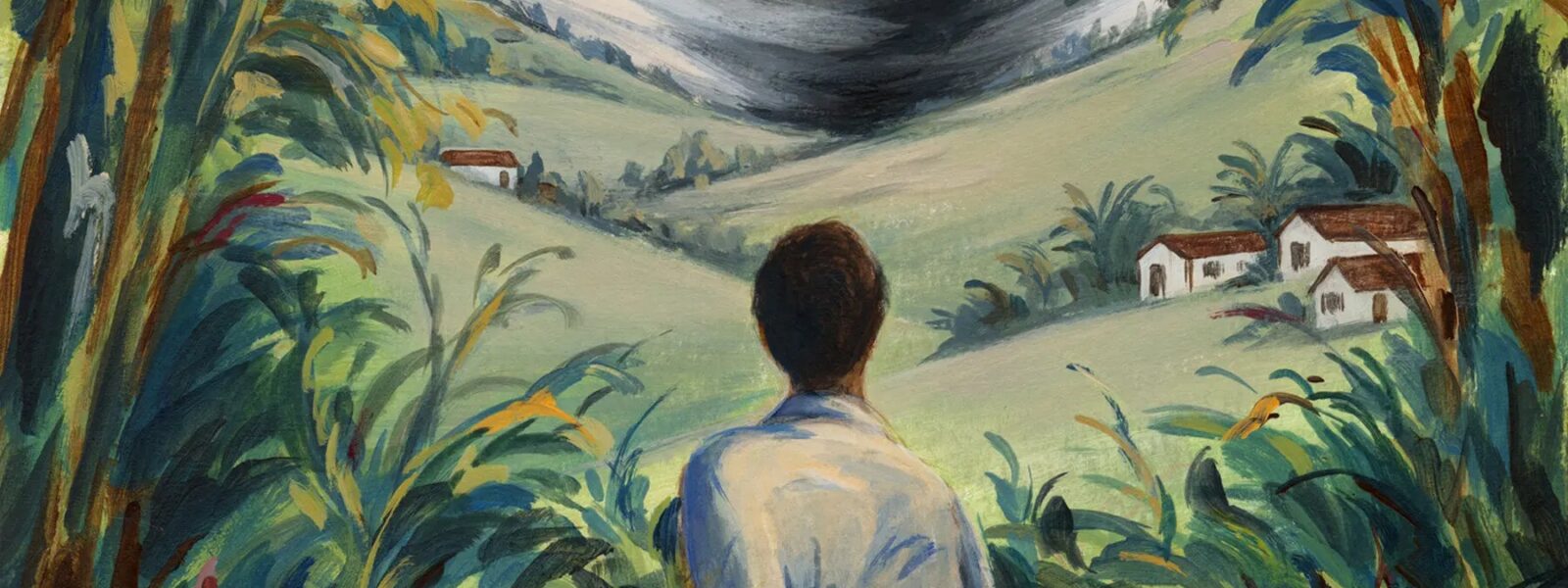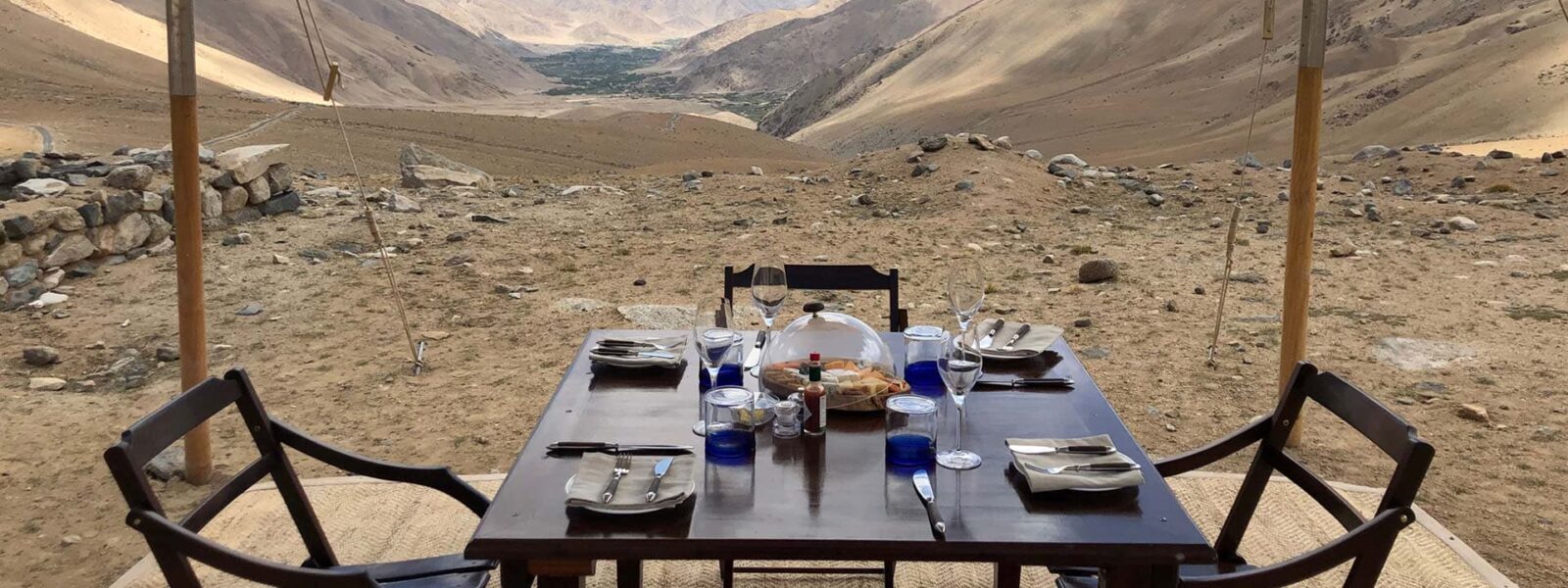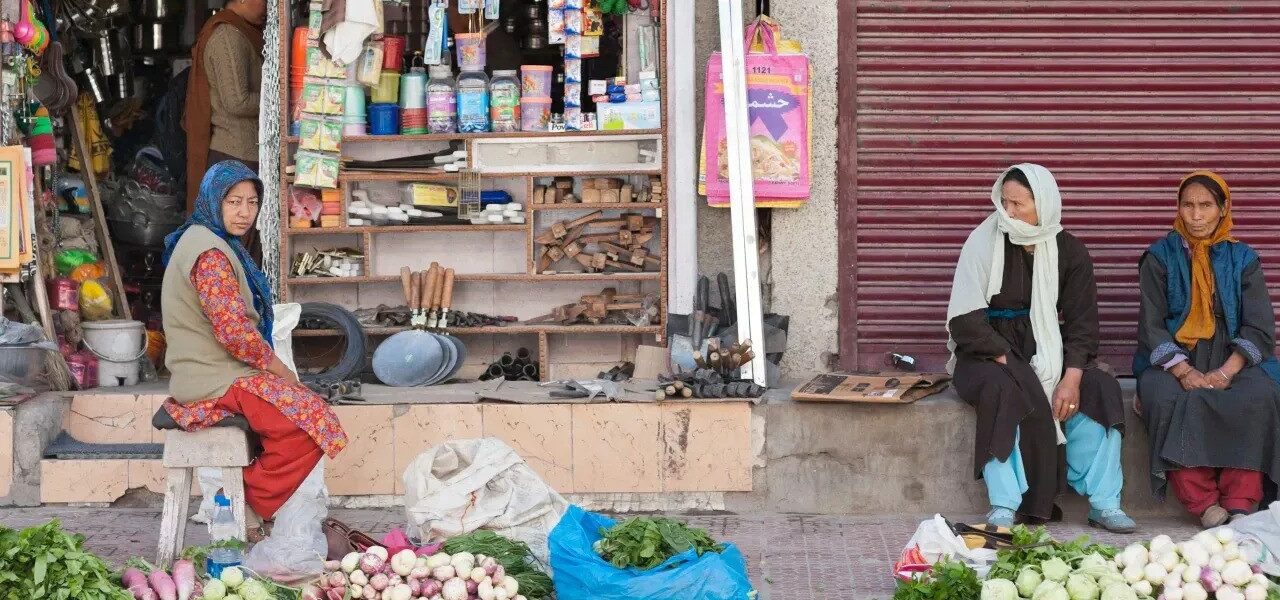Walking the High Roads of Ladakh’s Hidden Valleys
By Elena Marlowe
Introduction: When the Trails Become the Sky
The First Glimpse of Ladakh
Arriving in Leh is like stepping into a brighter octave of the world. The air is crystalline, the light almost weightless, and the silence feels purposeful, as if the mountains themselves were holding their breath. From the window of the flight you glimpse a maze of tawny ridges and snow-brushed summits, but it is only when your boots find the ground that Ladakh reveals its true scale. This is where hiking in Ladakh ceases to be a list of trails and becomes a way of listening. The paths drape across slopes the colour of old parchment, slip past monasteries that ring with low morning chants, and weave through villages where apricot trees lean over white-washed walls. You look up and the sky seems nearer, not metaphorically but almost physically—close enough to make you believe that with a few more careful steps the horizon might open and usher you further along its blue edge. Hiking in Ladakh invites a deliberate rhythm: walk slowly, drink water often, greet the dogs at the village edge, and nod to the prayer flags that fringe the ridgelines. It is travel stripped back to essentials, practical and poetic at once. For European travelers who love long days on foot and evenings spent over a simple, warming meal, hiking in Ladakh offers a rare promise: you will come for views, but you will stay for the sense that each step clarifies something in you, as if the thin air carried a talent for truth-telling.
Why Ladakh is Every Hiker’s Paradise
The Call of the Himalayas
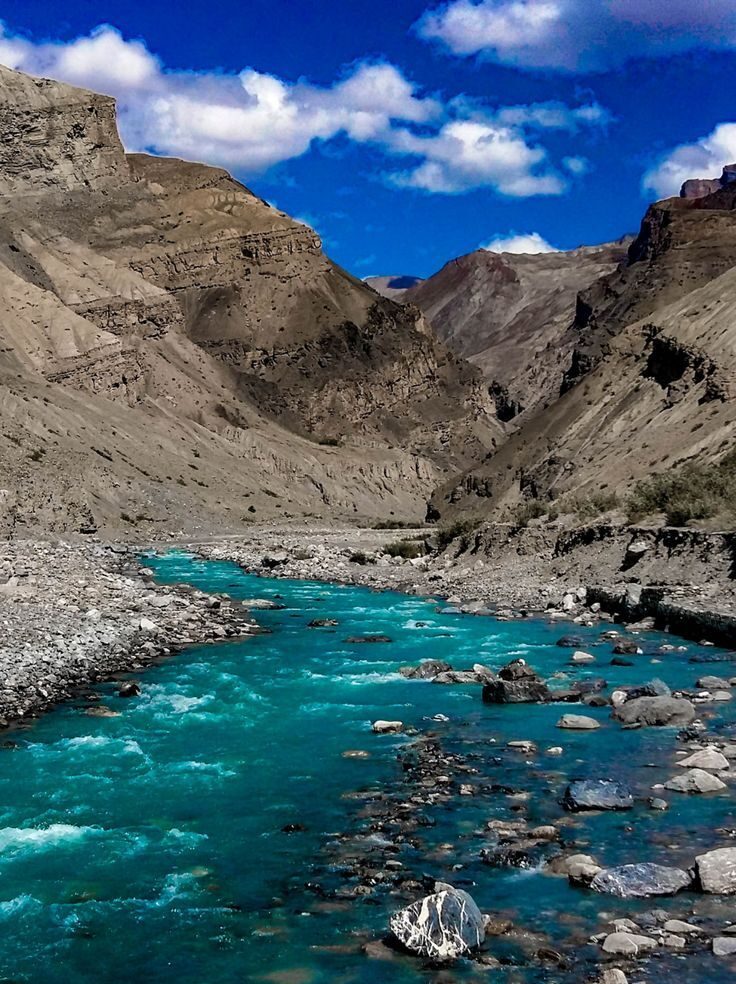
Ask a dozen trekkers why they choose hiking in Ladakh and you will hear a chorus of reasons, each true and incomplete. Some come for the high, dry grandeur of the Trans-Himalaya, where the palette is more sandstone and silver than alpine green. Others love the texture of the landscape: pleated ridges, riverbeds braided with turquoise threads, and passes that feel like terraces overlooking another planet. The altitude reshapes distance—five kilometres can feel like ten—and so your pace becomes thoughtful, a quiet negotiation between lungs and landscape. There are familiar comforts for European hikers—switchbacks, cairns, tea breaks—but there is also a liberating unfamiliarity. You might cross a herd of pashmina goats, follow an irrigation channel that glitters like a small miracle in the sun, or share a footpath with children carrying copper pots to the spring. Hiking in Ladakh hands you wide horizons and precise encounters in the same hour. Even on popular routes, there are long spells when you hear only your own footsteps and the wind clicking through prayer flags. It is scenic, certainly, but also strangely intimate, because the terrain asks for your attention, then rewards it with clarity. With every kilometre, your eye learns new shades of ochre, your ear picks out the river’s many voices, and your stride settles into a sustainable cadence that feels like a promise you can keep.
Cultural Encounters Along the Trails
What makes hiking in Ladakh linger in memory is not only the summits and saddles, but the human texture stitched through the valleys. Village lanes are bright with barley fields and marigolds; stupas sit like patient sentinels at the edge of footpaths; and gompas watch from their cliff-shoulders, bells chiming soft notes into the afternoon. Homestay treks turn a walk into a conversation. You enter kitchens scented with butter tea, you notice how the morning sun paints the courtyard walls, and you learn that hospitality here is a practiced art—simple, generous, never performative. A grandmother might show you how to spin wool; a teenager will tell you about school in Leh; a monk may remind you, kindly, to take your shoes off before stepping onto the monastery floorboards polished by centuries. Hiking in Ladakh also means learning to read the rhythms of local life: harvest weeks humming with neighbours, festival days when a whole village moves in colour, winter mornings when the world is soft with frost and smoke. Respect flows both ways when you walk with care: greet people, accept tea when offered, and ask before photographing faces or courtyard altars. Culture is not an attraction here but a living routine, and if you match your pace to it, your route becomes richer. In the hush between one village and the next, you realise that the skyward trails are held together not just by rock and dust, but by stories that have been walked into them for generations.
Some places overwhelm you with spectacle; Ladakh meets you with space—space to look, to breathe, and to understand why walking can be the most eloquent way to travel.
Trekking Routes that Touch the Sky
Markha Valley: Ladakh’s Classic Journey

There is a reason the Markha Valley has become a shorthand for hiking in Ladakh: it offers a generous sweep of everything that makes this region compelling. The trail winds from river-shaded villages to high pastures and on toward passes that read like ledges between worlds. One day you follow poplar-lined paths, stepping aside for a pony caravan bright with tassels; the next you climb into an amphitheatre of rock where colours tilt from russet to grey to violet. The villages welcome you with homestays—thick-walled houses cool by day and warm by night—where a bowl of thukpa appears with the ease of a blessing. You wake to the sound of a courtyard broom and the slow clink of cups; you set out early to cross the river when it runs lower; you pause for a snack beside chortens powdery with sun. Hiking in Ladakh reveals its practical wisdom here: start steadily, take the contour rather than the shortcut, and keep your stride light before the pass. The altitude makes the final climb feel like a dialogue with your breath, but the view from the top unknots any argument: serried ranges, valleys brushed with barley, glaciers faint as chalk on the far horizon. The descent delivers you back to human scale—children laughing on rooftops, a dog trotting dignified patrol, a water mill ticking in a shadowed lane. Markha is not just a scenic showcase; it is a teacher of pace, kindness, and the usefulness of a well-packed day bag.
Sham Valley: The Gentle ‘Baby Trek’
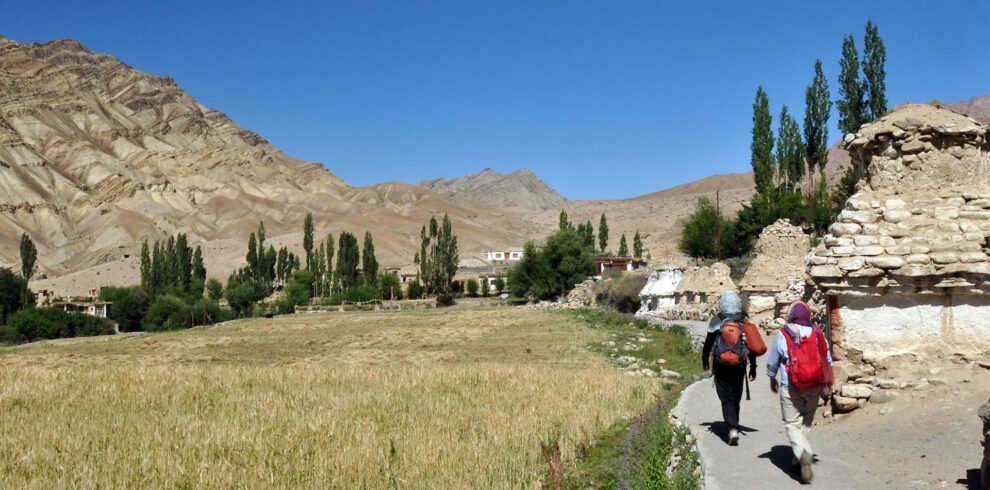
For travelers curious about hiking in Ladakh but wary of hard altitude days, the Sham Valley—often called the “baby trek”—is the perfect overture. Think of it as a soft handshake with the region: shorter ascents, comfortable distances, and nights in villages where the guest room window frames apricot branches like a painting. The terrain is friendly—waves of ochre hills, shallow canyons, the occasional ridge that rewards a half-hour’s effort with a full hour’s view. You pass mani walls and whitewashed stupas, and every now and then the valley opens to reveal a monastery perched on a rock like a lighthouse. Because the days are manageable, you have time for what makes hiking in Ladakh so appealing: unhurried tea with your hosts, a visit to a small gompa where a caretaker points out a mural’s fine detail, or an extra loop to a lookout you spotted at lunch. The route is ideal for families, first-timers, or anyone determined to combine walking with cultural immersion rather than endurance. Homestays serve simple, nourishing meals—spinach from the garden, yoghurt from the morning’s milk, bread hot from the pan—so your energy feels honest, earned step by step. By the final day, your ankles have learned the local footpaths, your lungs have found their range, and the idea of graduating to a longer route no longer feels bold but inevitable. This is the charm of Sham: it proves that in hiking, as in life, gentle beginnings can lead to great distances.
Lamayuru to Wanla: Walking Through Moonland
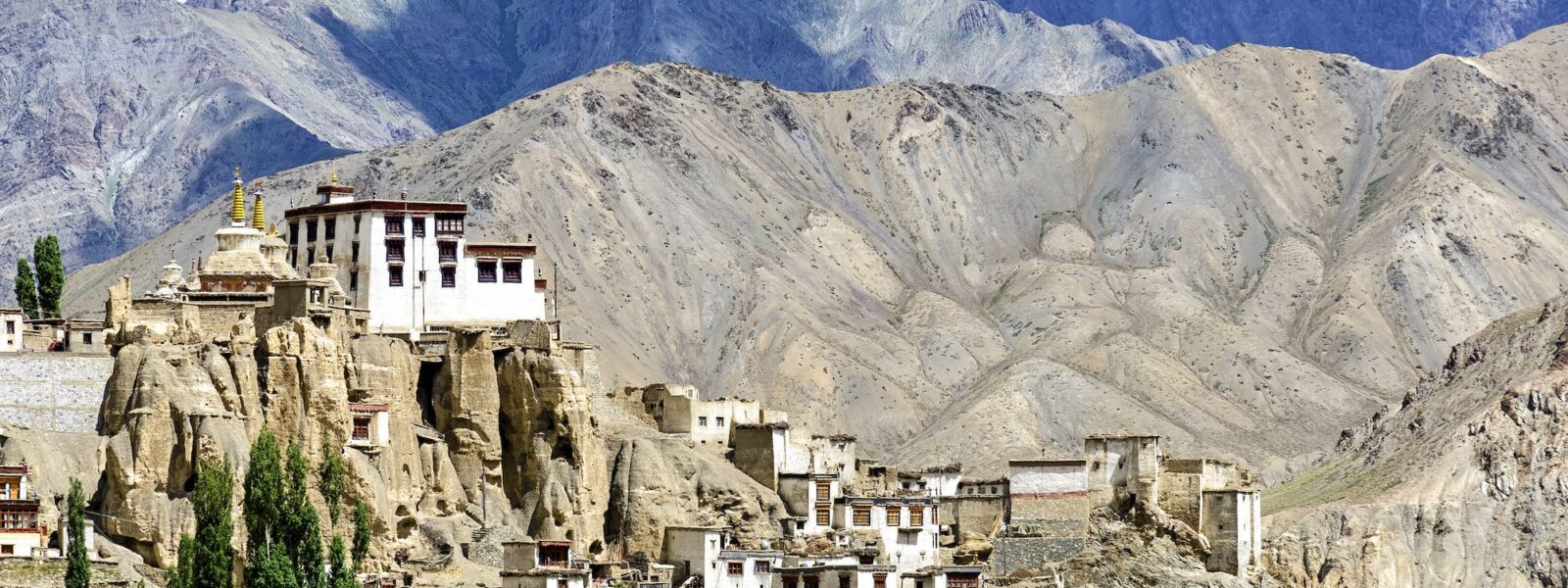
The Lamayuru region introduces a stranger geometry to hiking in Ladakh. The rock here has been sculpted into fluted ridges and bowls that look as if a quiet sea once made a home among them. From Lamayuru monastery—its white tiers clinging to a tooth of stone—the trail steps into undulating “Moonland,” a playground of mellow golds and greys. The path threads above ravines, then relaxes into broad terraces where the wind combs the grass in long strokes. Hikers will relish the variety: a steady climb to a saddle where the world falls away in four directions; a traverse across slopes stippled with wild thyme; a descent into Wanla where the fortress ruins and the river bracket the village like bookends. Hiking in Ladakh is never just a litany of ascents and descents; it is a matter of noticing textures. Here you feel gravel shift underfoot, hear a raven’s echo ricochet between gullies, watch a shepherd tilt his staff and reshape the flock’s movement with a whistle. The day’s map becomes both practical and painterly. While the distances are feasible for fit walkers, the altitude keeps you honest: water breaks are not interruptions but rituals. At day’s end, Wanla welcomes with its calm lanes and shaded fields, reminding you that even in otherworldly terrain, the reward of the walk is often a very worldly supper and a place at a wooden table. The Moonland proves that strangeness can be hospitable, and that beauty wears many familiar faces once you have taken the time to walk among them.
Frozen Adventures: Chadar Trek (Optional Mention)
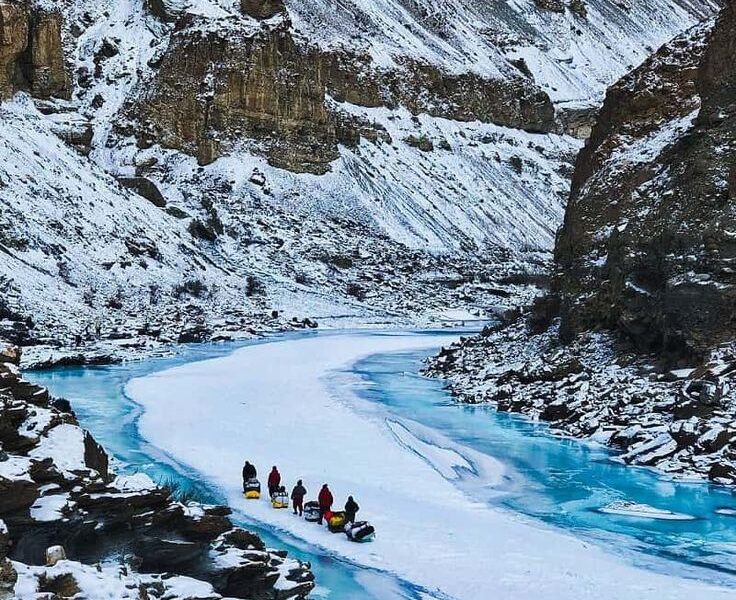
In winter, when the Zanskar River hardens into a corridor of ice, hiking in Ladakh takes on a stark, luminous theatre. The Chadar Trek is not a casual undertaking—it asks for experience, proper gear, and a respect for cold that borders on reverence—but it is also one of the clearest lessons in reading a landscape’s moods. You move along the river’s frozen skin, listening for its voice beneath your feet. The ice is not uniform: some sections are cloudy and trustworthy, others glassy and demanding, and every bend brings a recalibration of balance and caution. Cliffs vault above the river like frozen curtains; icicles hang like organ pipes; the air rings with the kind of quiet only deep winter can compose. Hiking in Ladakh here means widening your awareness: of temperature shifts, of the safety in numbers, of the wisdom guides have distilled over seasons. Camps appear where the sun finds a corner, and the simplest comforts—a hot bowl of soup, a boot warmed by the fire—feel extravagant. This is a trek of endurance and attention rather than speed; a place where your breath becomes a visible companion and your progress is measured not in kilometres but in the steadiness of your steps. It is not for everyone, and it should not be attempted lightly, but for those who choose it with preparation and humility, the river becomes a tutor in composure. You finish with a sharpened sense of what it means to walk kindly across a world that, even at its coldest, has welcomed you.
Practical Wisdom for High-Altitude Hikers
When to Go
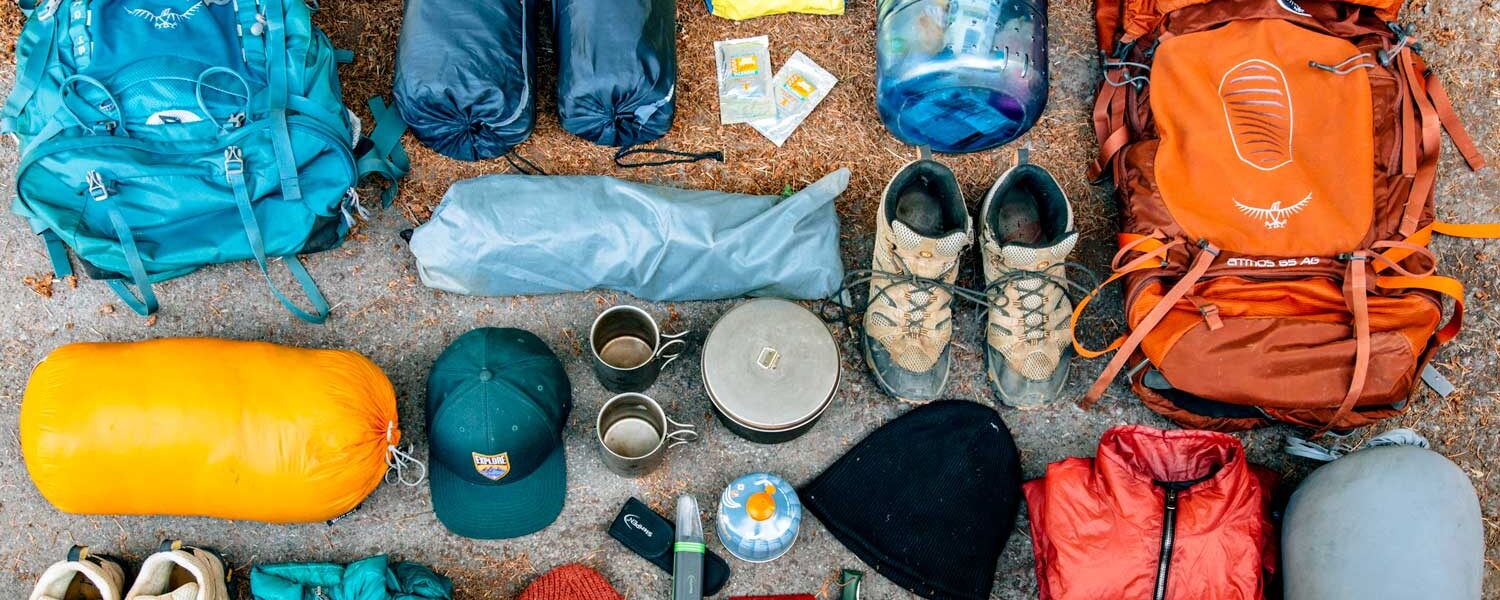
Timing can transform hiking in Ladakh from a good idea into a great one. The broad window is late spring through early autumn, with June to September offering the most reliable mix of open passes, comfortable daytime temperatures, and lively village life. May can be exquisite in lower valleys—the light is gentle and apricot blossoms shake like confetti—but high routes may still be snow-locked. By July, trails move into their stride: barley fields are a green quilt, rivers are purposeful but fordable, and homestays hum with travellers weaving stories into the evening. September wears a calmer mood: gold creeps into the willows, the air sharpens, and views acquire a kind of lapidary clarity. Each month carries its nuance; what matters is matching your aims to the calendar. If your heart is set on beginner-friendly treks, the Sham Valley in peak summer is an elegant choice. If you crave broader days and higher saddles, late July and August open the map. Hiking in Ladakh is largely a matter of aligning expectation with season: ask locally about stream levels, carry layers that can shape-shift with the sun, and allow one flex day in your plan; the mountains appreciate travellers who travel with grace.
Acclimatization & Preparation
Even the most enthusiastic walker must make peace with altitude before leaning into hiking in Ladakh. Acclimatization is not a bureaucratic hurdle but the first act of your journey. Spend one to two nights in Leh before your trek; climb stairs slowly, drink far more water than feels stylish, and treat coffee as a treat rather than a pipeline. Short local walks help—stroll to a viewpoint after breakfast, visit a monastery in the afternoon—so your lungs and legs remember their partnership at this elevation. Preparation at home helps too: weeks before departure, make friends with your day pack and test your ideal weight; teach your new boots the shape of your foot; practice slow, steady breathing on an uphill path in a local park. Hiking in Ladakh rewards those who arrive with humility and a good routine. Consider a modest first trek like Sham or a homestay-based route, then graduate to longer days once your body signs off. Carry an agreed plan for altitude symptoms—headache, nausea, dizziness—and respond early rather than bravely. Trekking poles protect knees and rhythms alike; a brimmed hat and lip balm keep the sun honest. Preparation is not paranoia. It is a vote of confidence in the miles you hope to earn, and the easiest way to ensure that the moments of awe on a pass are not compromised by an urgent conversation with your pulse.
Packing for the Sky
There is a particular pleasure in packing for hiking in Ladakh: the sense that each item has to justify its place by being useful in more than one way. Layers rule. Start with a breathable base, add a fleece that can hike and dine, and top with a shell that laughs at wind. Gloves find their moment even in summer mornings; a buff solves three problems before lunch; sunglasses protect not just from sun but from altitude’s glittering brashness. Bring a reusable bottle and a compact filter so streams become allies rather than hazards; Ladakh teaches self-sufficiency kindly, and your pack should echo that. A lightweight sleeping bag liner is a homestay hero, and a small first-aid kit should include blister care you trust. Hiking in Ladakh invites long days, so add high-calorie snacks that don’t sulk when squashed, and a tiny notebook for the recollections that fall into your head when the views are almost too large to hold. Footwear deserves attention: sturdy, well-broken-in boots for mixed ground, and camp shoes that let your feet celebrate the evening. Keep electronics simple—maps offline, power bank compact—and keep your pack under a weight that preserves your curiosity. The goal is not to carry all contingencies, but to choose well and walk light, meeting the mountains as a nimble, well-prepared guest.
Sustainable & Soulful Trekking
Treading Lightly on the Trails
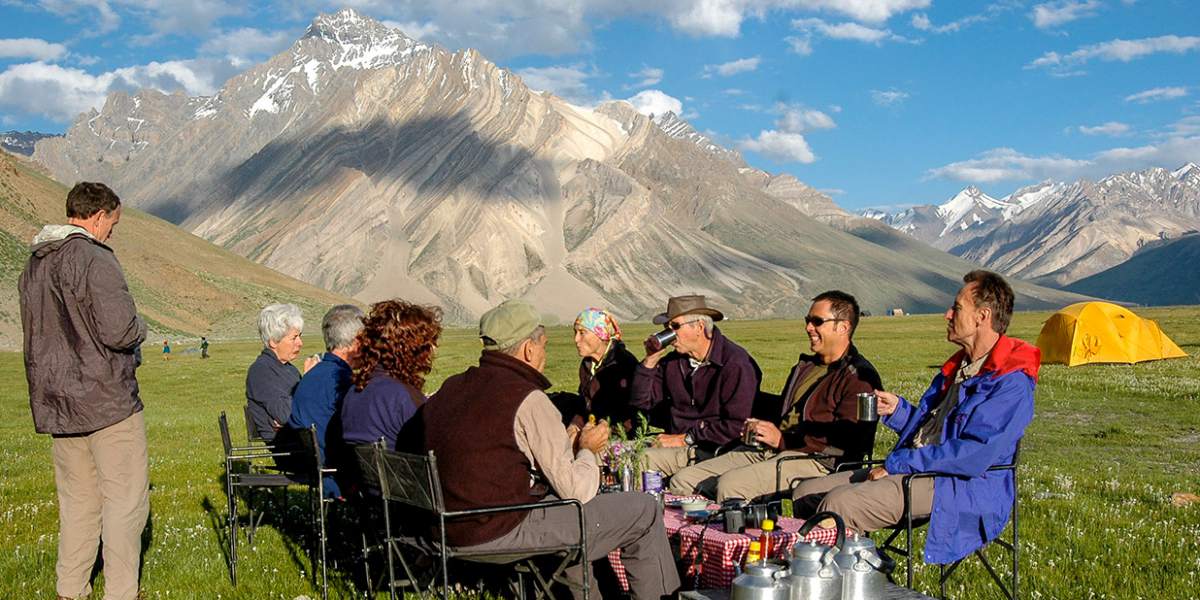
The privilege of hiking in Ladakh comes with responsibilities that are neither onerous nor abstract. Water is precious in these high valleys; treat it as the treasure it is by refilling and filtering rather than purchasing plastic. Stay on established paths where possible, not because the rock is fragile, but because the plants that stitch the soil together are slow to repair. Homestays provide not only comfort but a direct line of support to local families; pay fairly, ask if there is a village fund for repairs or school materials, and remember that kindness is an economy too. Pack out what you pack in, including the sneaky corners of your snack wrappers, and consider carrying a small waste bag to gather what others have forgotten. Hiking in Ladakh can be a lever for good if we treat it as a practice: greet herders, shut pasture gates as you found them, accept that some places are sacred and are best appreciated with your eyes rather than your camera. When buying souvenirs, choose local crafts made by the hands you meet on your route. If you hire guides or porters, listen to their advice; their knowledge is not a garnish to the trek, it is the trek’s operating wisdom. Light footprints look elegant. They also make it possible for trails to remain generous to those who come after us.
Why Ladakh Rewards the Slow Traveler
Slow is not a euphemism for timid; it is a method for noticing more. In a region as large-scaled as this, hiking in Ladakh repays patience with dividends. When you loosen your itinerary—building in an extra cup of tea, granting yourself the luxury of a detour to a viewpoint—you discover that the journeys you remember are assembled from small, unhurried scenes: the way the river’s colour tilts from jade to turquoise over a morning; the hush of a monastery corridor at dusk; the way a child’s kite frets the wind above a barley field. A slower pace also respects the altitude, letting your body stitch strength day by day. It changes your conversations too. Hosts who have seen a hundred hurried hikers will lean into longer stories; a monk may show you a book’s marginalia; a shepherd might sketch a map of the hills in dust. Hiking in Ladakh is not a competition with a clock but an invitation to calibrate days by grace rather than speed. You will still reach your pass. You will still see far. What shifts is your aperture—wider, kinder, less greedy—and with that adjustment the region ceases to be a backdrop and becomes a companion. When, at last, you descend, you carry not just photographs but a new habit of attention that enlarges even the ordinary streets you return to.
FAQs: Planning Your Trek in Ladakh
What are the best treks in Ladakh for beginners?
For first-time visitors, the Sham Valley is a graceful entry into hiking in Ladakh. Distances are friendly, ascents are moderate, and homestays make logistics refreshingly simple. It’s also a cultural primer—monasteries, village lanes, and terraced fields all appear within manageable walking days. Markha Valley can suit confident beginners if you allow adequate acclimatization and keep daily elevation gains conservative. The key is not bravado but pacing: start slow, carry light, and let your first two days be shorter. With that approach, “beginner” becomes simply “unrushed,” which is a strength in these high valleys.
How do I avoid altitude sickness while hiking in Ladakh?
Altitude is a partner in every plan. Spend at least one to two nights in Leh before starting, drink generously, and treat caffeine and alcohol as luxuries rather than daily anchors. Choose a route that builds gradually and listen to your body—headaches, nausea, or unusual fatigue are signals to rest, descend, or seek advice. Hiking in Ladakh rewards early, sensible responses. Consider a pulse oximeter if numbers comfort you, use sun protection to avoid dehydration’s sneaky cousin, and carry a simple plan agreed with your guide or group. Prevention is not dramatic—it’s a series of small, calm choices repeated well.
When is the best season for hiking in Ladakh?
June to September is the dependable sweet spot for most routes. Trails are open, villages are lively, and passes stand clear of troublesome snow. May can be lovely for lower elevations with blossoms and gentle light, while late September shifts into quieter golds and wonderfully crisp views. If you aim for higher passes, mid-summer improves your odds; if you want easy village days and cultural depth, almost any point in this window will serve. Hiking in Ladakh is about matching your appetite to the month rather than wrestling the calendar into submission.
Are homestay treks safe and comfortable?
Yes—homestays are the backbone of many routes and an excellent way to ground hiking in Ladakh within local life. Rooms are simple but welcoming; blankets are warm; meals are wholesome and often garden-fresh. Safety grows from communication: share your plan with your host, ask about water sources and path conditions, and learn a few polite phrases. Bring a sleeping bag liner for comfort and a small gift from home if you like. The benefit is not only convenience, but a richer understanding of place—the sound of morning chores, the laughter from a courtyard, the daily cadence of a family at altitude.
Do I need a guide for trekking?
On well-marked classics, experienced hikers may go independently, but a local guide elevates the journey from good to exceptional. Weather shifts, river levels rise and fall, and village news travels by voice faster than any app. A guide threads those variables into your days with quiet skill. For offbeat routes or winter adventures, a guide is essential. Hiking in Ladakh is navigation plus nuance, and local expertise dissolves avoidable stress. Consider the value beyond safety: stories you would never hear, detours you would never notice, and the pleasure of walking without constantly negotiating the map.
What should I pack that travelers often forget?
A brimmed hat that loves the wind; lip balm that won’t melt in a pocket; electrolyte tabs for late-afternoon rivers; and a compact water filter. Add a tiny repair kit—needle, thread, a few safety pins—and a short length of cord for clotheslines or bootlace emergencies. A notebook for trail notes and names is more than sentimental—it preserves details that photographs can’t catch. Hiking in Ladakh also rewards a modest power bank and offline maps. Bring generosity too: a willingness to linger, to greet, and to adjust your plan when a local suggestion offers a better story.

Conclusion: Clear Takeaways for a High-Altitude Journey
What to Remember Before You Lace Your Boots
Hiking in Ladakh thrives on preparation and patience. Choose a season that suits your aims; give acclimatization the respect it deserves; and keep your pack a study in essentials. Start with approachable routes like Sham or a homestay-based segment of Markha, then stretch higher once your body agrees. Walk as a guest: greet, ask, listen. Support local guides and family stays, refill rather than buy plastic, and linger where a view asks you kindly to sit. The pay-off is not only panoramic but interior—you return with stronger legs and a calmer eye.
Closing Note: If you come to Ladakh to collect summits, you will find them. If you come to learn the art of looking, hiking in Ladakh will teach it to you gently, one ridge, one river, one generous doorway at a time. May your steps be light, your days long, and your evenings filled with stories that travel even further than you do.
About the Author
Elena Marlowe is an Irish-born writer currently residing in a quiet village near Lake Bled, Slovenia.
She is inspired by the calm of mountain lakes and the gentle rhythm of forest paths, shaping her work into elegant and practical travel columns.
Her writing encourages readers to move slowly, to see landscapes not only as destinations but as companions, and to find a sense of stillness that lingers long after the journey ends.


